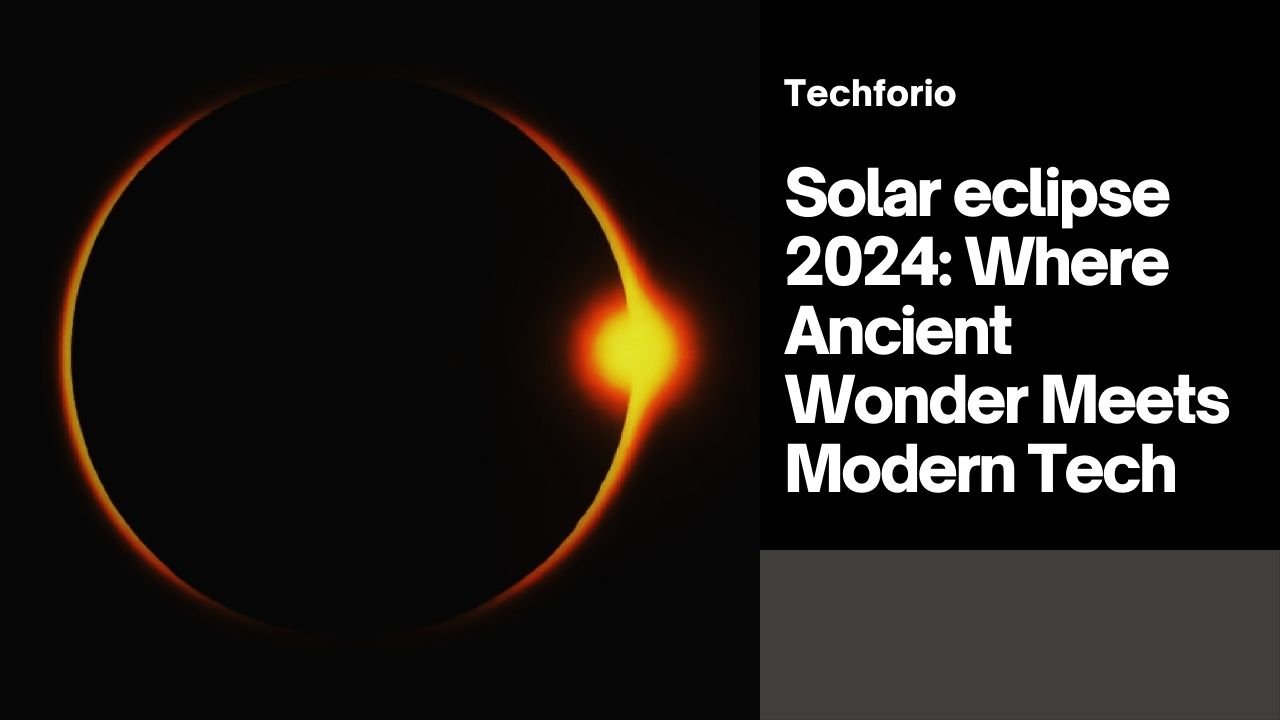The solar eclipse in 2024 has captivated humanity for millennia. These awe-inspiring events, where the moon temporarily blocks the sun’s light, have been woven into mythologies and meticulously recorded throughout history. Today, solar eclipses continue to spark our imaginations, but now technology plays a pivotal role in how we experience and study them.
Interesting Eclipse Facts
• Rarity and Types:
While solar eclipses happen a few times a year, they’re only visible from narrow strips on Earth. There are total, partial, and annular solar eclipses. A total solar eclipse is the most dramatic!
• Eclipse Speed:
During a total solar eclipse, the Moon’s shadow races across the Earth at incredible speeds, sometimes exceeding 1500 miles per hour!
• Animal Behavior:
Animals often react strangely to the sudden darkness and temperature drop during a total eclipse. Birds might stop singing, and nocturnal creatures may emerge.
Tech and Eclipses: A Perfect Pairing
• Prediction and Planning:
Complex astronomical software helps predict the precise path and timing of eclipses years in advance. This allows scientists, eclipse enthusiasts, and even casual observers to plan accordingly.
• Livestreaming the Show:
Thanks to telescopes, high-quality cameras, and the internet, solar eclipses can be livestreamed to audiences around the globe, sharing the wonder with those who cannot witness the spectacle in person.
• Citizen Science Power:
During eclipses, organized citizen science projects gather valuable data from widespread locations, helping astronomers study the Sun’s atmosphere, temperature variations, and more.
• Spacecraft Observations:
Artificial satellites orbiting Earth can capture unique perspectives of solar eclipses, observing the Moon’s shadow and its effects on our planet.
The Next Great Eclipse
The next major solar eclipse visible across a good portion of North America will be the total solar eclipse on April 8th, 2024. Technology will make this eclipse even more accessible and scientifically valuable:
• Interactive Mapping:
Websites and apps with interactive maps will help people zero in on the best viewing sites and understand the eclipse’s progression.
• Safe Viewing Innovations:
Advances in solar filters and projection techniques ensure millions can safely observe the eclipse without risking eye damage.
• Scientific Investigations:
Researchers will be positioned along the path of totality, armed with sophisticated telescopes and instruments to gather data during those precious moments of darkness.
Mythology to Megabytes
From ancient times to the digital age, solar eclipses have continued to be a source of wonder. Technology expands our reach, enhances our understanding, and allows us to share the experience of this celestial phenomenon on a truly global scaleLet me know if you’d like even more eclipse facts or a deeper dive into a particular aspect of technology and solar eclipses!
Share via:

